Problem Horticultural Plants
- Jump To:
- Alligator Weed
- Autumn Olive and Russian Olive
- Bermudagrass
- Callery Pear or Bradford Pear
- Chinese Privet
- Chinese Wisteria and Japanese Wisteria
- Crown Vetch
- Eastern Redcedar
- English Ivy
- Hydrilla
- Japanese Honeysuckle
- Kudzu
- Mimosa or Silktree
- Multiflora Rose
- Old World Bluestems
- Parrotfeather
- Princess Tree
- Purple Loosestrife
- Saltcedar or Tamarisk
- Siberian Elm
- Water Hyacinth
- Watermilfoil
- Weeping Lovegrass
- Yellow Iris
Gardeners are constantly on the lookout for a new and interesting plant that might bring beauty and interest to their landscape. Some of these plants are cultivars of common native plants found across the forests, prairies, shrublands and wetlands of the southern Great Plains. Others come from foreign shores. Most of the plants encountered in a plant nursery are benign and can be safely brought into the home garden. However, some of them are significant threats to the ecological integrity of Oklahoma. These invasive plants not only are a problem for native flora and fauna, they often impact agricultural production, clog waterways and burden landowners with additional costs. This fact sheet is designed to help you avoid some of these problem plants. While Oklahoma has many invasive plants, a few of the species either currently or likely to become significant problems for our state are discussed here, as well as plants commercially available in plant nurseries or from online vendors. Education about identifying these problem plants is encouraged and suitable alternatives can be found. Further, if noticing an invasive plant being sold at a nursery, please inform the manager. Many are not aware of the risks associated with certain plant species. Some of these plants also may be noticed in the home landscape. Recommendations of native alternatives, when practical, is given here, although many non-native species posing little risk could also be selected. Basic information about the plant, its origin, why or how it was introduced into the U.S., basic traits that lead to its invasiveness, and control is discussed, however a complete taxonomic description of each plant is not provided. A map of Oklahoma indicating counties with known escaped populations also is presented. Some of the plants in this guide may not have invasive potential to the entire state because Oklahoma’s climate and soils vary tremendously. Unfortunately, predictions are difficult, thus recommendations of the plants described here should be avoided statewide. Notice that most of the invasive plants listed were intentionally introduced. This continues at present. Therefore, it is the responsibility of each gardener to be prudent and judicious in plant material selection. If there are specific concerns or questions about a plant, please contact the local Oklahoma Cooperative Extension Service educator.
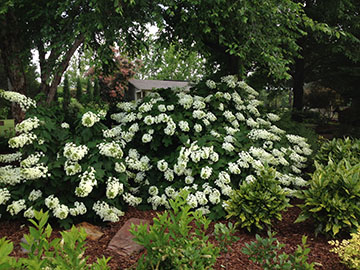
Plants add value and interest to landscapes. However, care should be taken to avoid invasive plants that might escape from the home garden.
Alligator Weed
Alternanthera philoxeroides
Origin: Native to Parana River area of South America.
Introduction: First detected in Mobile, Alabama in 1897. Likely introduced unintentionally from ship ballasts. Now distributed across the southeastern U.S. and California.
Traits: Spreads primarily by adventitious rooting from stem nodes and roots. Grows in shallow water.
Effects: Invades agricultural areas, blocking drainage and irrigation canals, causing problems on agricultural land. Can impede boat traffic due to excessive growth. Competes with native aquatic vegetation. Increases water loss through transpiration. Ingestion of plant by cattle can cause photosensitization, skin lesions and liver damage. Excessive plant decomposition can lead to water quality issues. May lead to increased mosquito numbers.
Management: Physical removal can be used, but rarely removes all plant parts. Bare areas may be recolonized. Approved aquatic herbicides are effective, but generally require multiple applications.
Alternative Plants: Water primrose (Ludwigia repens) – Note this plant is very aggressive and will cover the surface of the water similar to alligator weed, but it is native.
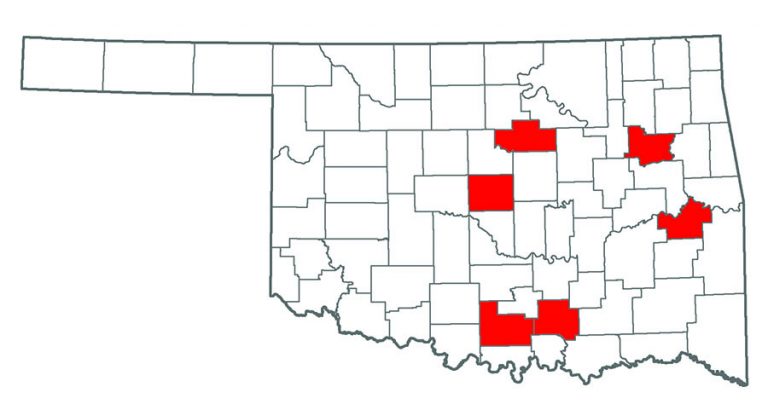
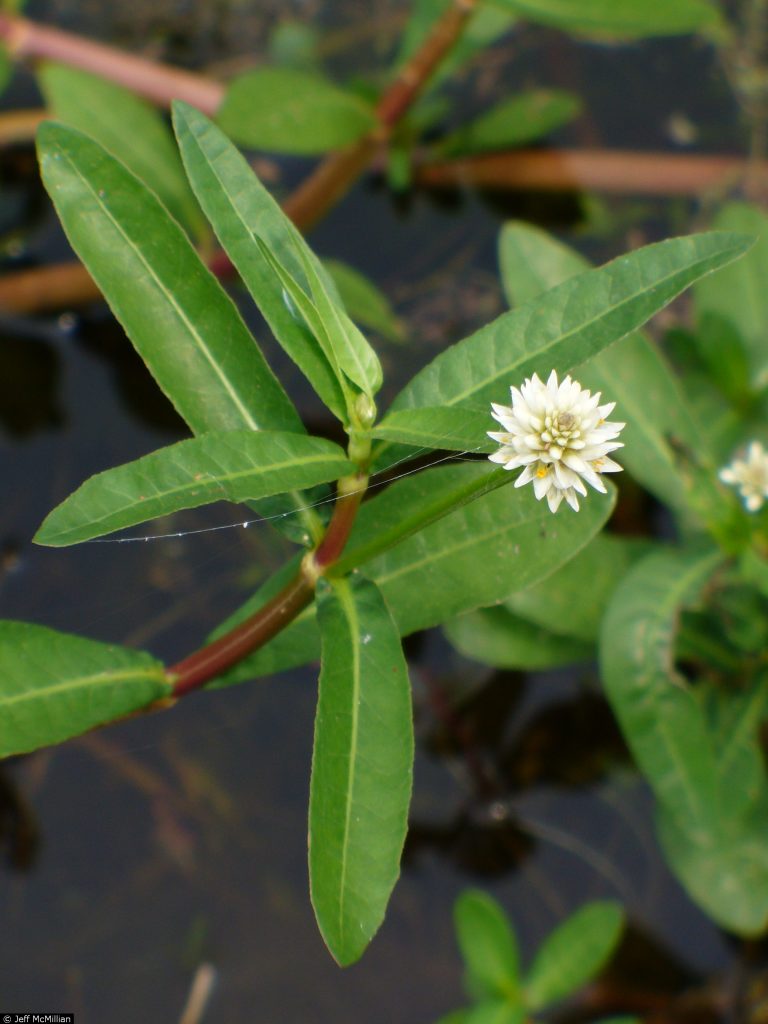
Autumn Olive and Russian Olive
Elaeagnus umbellata and Elaeagnus angustifolia L.
Origin: southern Europe and Asia.
Introduction: Introduced in the U.S. in the late 1800s as an ornamental and windbreak plant. Also used for wildlife cover and food. Russian olive is found across most of the U.S. except the southeastern states. Autumn olive is found primarily in the eastern U.S.
Traits: Both of these very similar woody plants can form dense thickets and are quick to invade open grasslands. Tolerant of various soil types and capable of germinating under existing tree cover. Abundant seed producer that is favored by birds, which aids in dispersal. Very fragrant flowers and thorns on both species. Has small alternate oval to lanceolate shaped green or silver-gray leaves.
Effects: Overcomes native vegetation. Can assist forest birds in occupying formerly open grasslands. Interferes with nutrient cycling and hydrology. These trees also can change fuel loads of wildfires.
Management: Cut and treat the stump with herbicide for the most effective control of this vigorous resprouter.
Alternative Plants: Mexican plum (Prunus mexicana), American beautyberry (Callicarpa americana), Eastern redbud (Cercis canadensis), and Carolina buckthorn (Frangula caroliniana).

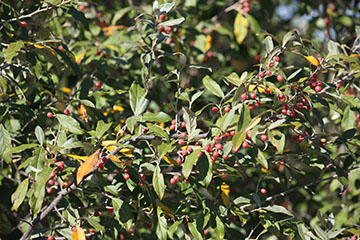
Bermudagrass
Cynodon dactylon
Origin: Africa.
Introduction: Introduced into the U.S. around 1751, likely in contaminated hay. It was recognized as in important turfgrass and livestock forage, and was quickly planted widely. Now occurs across the U.S. with the exception of the north-central region. Most invasive in southern U.S.
Traits: Creeping herbaceous plant with narrow leaves that reproduces primarily by vegetative means. Two types of shoots; aboveground as stolons, and belowground as rhizomes. Both are capable of rooting in the ground and creating new plants as they grow outward from the original plant. Bermuda grass is an aggressive invader in Oklahoma and is found in most native grasslands statewide.
Effects: Forms dense sod, making plants highly competitive with crops and other grasses for water and soil nutrients. Dense sod reduces movement and food resources for many ground-dwelling birds.
Management: Physical removal for small areas can be effective, but is difficult because underground rhizomes often remain. Mulches of black plastic or geotextile landscape fabric can be effective because light is excluded. Grass- selective or nonselective herbicide control can be successful, but will require multiple applications.
Alternative Plants: Buffalo grass (Bouteloua dactyloides).


Callery Pear or Bradford Pear
Pyrus calleryana
Origin: China.
Introduction: Introduced to the United States in 1909 as an attempt to control fire blight of the common pear. It is now commonly used as an ornamental.
Traits: Medium-sized tree with showy white flowers in early spring, followed by glossy leaves. There are thorned and thornless cultivars. Callery Pear is fairly resistant to disease and pests, tolerates a range of environmental conditions, grows rapidly in dense thorny thickets and flowers abundantly. Its seeds are readily dispersed by birds.
Effects: Its rapid growth inhibits late- to middle-stage successional native species from growing in disturbed sites. Its ability to outcompete native species causes a change in plant communities. It also creates cover for some wildlife species, which can change a grassland species community to a woodland community. It is an excellent roosting tree for gregarious blackbirds, grackles and starlings, which are problematic in urban areas. This plant has invaded multiple locations in central and eastern Oklahoma.
Management: As this plant is a resprouting woody plant, herbicides will be needed. Small poorly established trees can be sprayed with a foliar herbicide. Larger trees should be cut and a basal herbicide applied immediately.
Alternative Plants: Eastern redbud (Cercis canadensis), American plum (Prunus americana), Mexican plum (Prunus mexicana), and Carolina buckthorn (Frangula caroliniana).

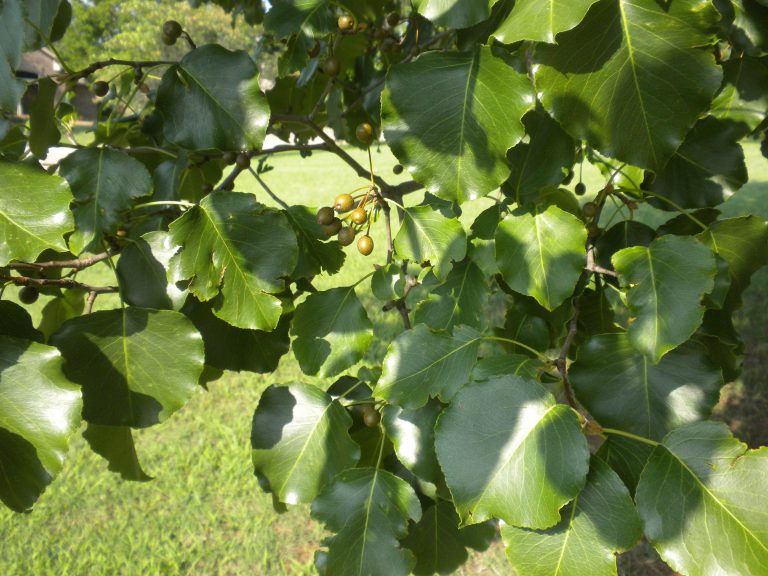
Chinese Privet
Ligustrum sinense
Origin: China.
Introduction: Introduced to the U.S. in 1852 as an ornamental shrub. It continues to be sold in the horticultural industry and is found throughout the southeastern U.S.
Traits: Medium-sized semi-evergreen shrub that grows in shade or partial sun. This plant requires fairly moist soil. Has dark green, small, oval, opposite leaves. Capable of both sexual and vegetative reproduction.
Effects: Difficult to control because of seedbank size, as well as ability to reproduce from root suckers. Seeds are readily dispersed by birds. Tends to dominate the understory in forested areas and woodland edges.
Management: Chemical application of herbicides. This plant is a semi-evergreen and can be controlled chemically during the winter when most other plants are dormant. However, control may be most effective during the summer months. Mechanically removing the entire plant, including the roots may be effective, but is largely impractical.
Alternative Plants: Coralberry (Symphoricarpos orbiculatus).
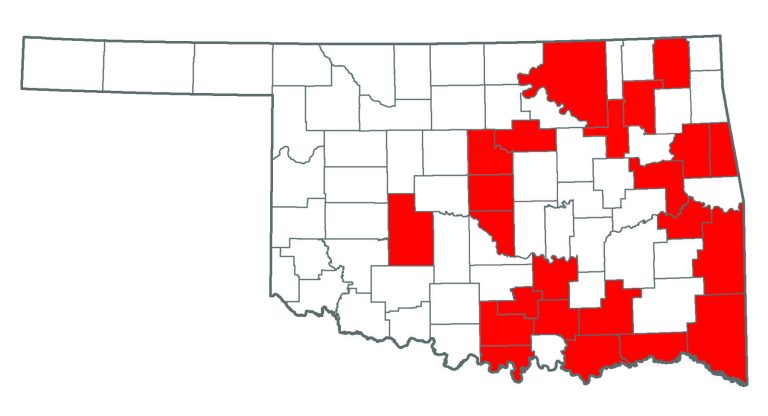
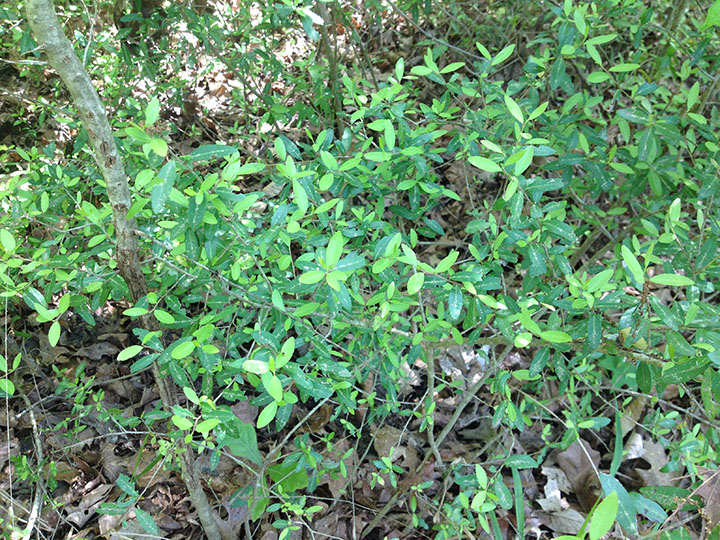
Chinese Wisteria and Japanese Wisteria
Wisteria sinensis and Wisteria floribunda
Origin: Southeastern China (W. sinensis) and Japan (W. floribunda).
Introduction: Introduced to the U.S. in the 1800s as ornamental plants.
Traits: These very similar long-lived vines are vigorous in growth. New vines germinate from seeds or sprouting rootstocks. The plant grows in dense thickets.
Effects: Vines twine tightly around host tree trunks, cutting through the bark and may eventually damage or kill the host tree. Dying trees create canopy gaps, which allow more sunlight to reach the ground, stimulating growth of additional Wisteria. Reduces midstory and understory plants within and along forest edges.
Management: Mechanical and chemical methods can all be used in managing Wisteria, however a combination of methods is most effective. The most effective is the combination of cutting, followed by herbicide application to the stump. Larger infestations can be controlled with foliar herbicides. Note: a native wisteria known as American wisteria (Wisteria frutescens) occurs in eastern Oklahoma, typically along stream margins. This plant looks very similar to the exotic wisteria species.
Alternative Plants: American wisteria (Wisteria frutescens), trumpet creeper (Campsis radicans), and Virginia creeper (Parthenocissus quinquefolia).
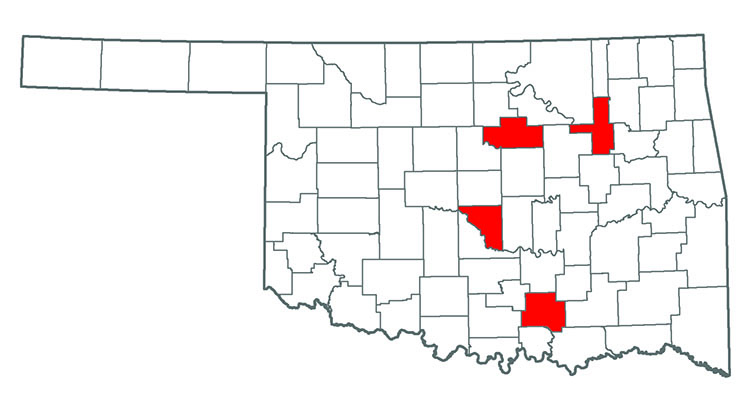
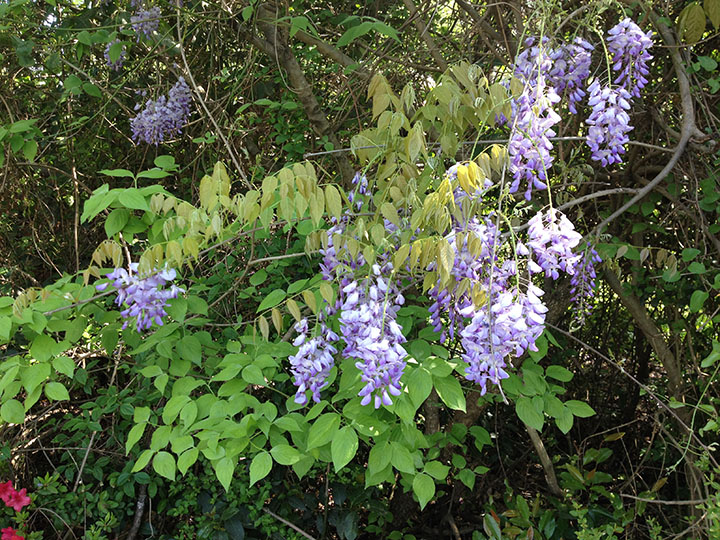
Crown Vetch
Securigera varia
Origin: Europe, southwest Asia and northern Africa.
Introduction: Introduced in the U.S. in the 1950s for erosion control. Now found across most of the U.S.
Traits: This low-growing plant has showy white and pink blooms and succulent compound leaves. It prefers sunny, open areas and is tolerant of low temperature, periods of drought and heavy rain. Located mostly along roads and streams, open fields and on waste grounds. Creeping stems grow two feet to six feet. Crown vetch has a multi-branching root system and spreads rapidly by strong rhizomes.
Effects: Forms large monocultures. The plant is toxic to non-ruminant animals if consumed in large quantities. Adversely affects natural succession of native plant communities, causing a monotypic herbaceous layer.
Management: Herbicides are the most effective means of control. Mechanical removal may work for small populations. Prescribed burning and mowing can be effective at limiting spread.
Alternative Plants: Passionflower (Passiflora incarnata) and Virginia creeper (Parthenocissus quinquefolia).

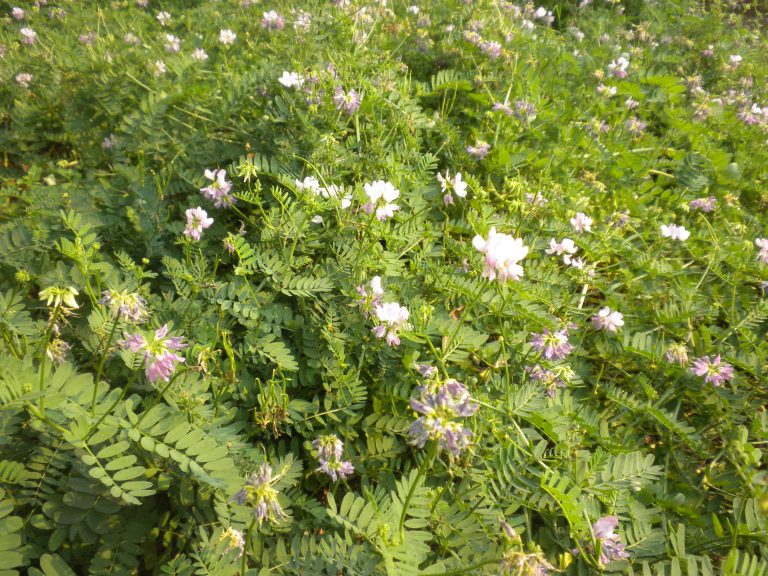
Eastern Redcedar
Juniperus virginiana
Origin: Eastern and central U.S.
Introduction: This tree is native to Oklahoma, but has increased significantly from historic times due to fire suppression and planting for windbreaks and ornamental purposes.
Traits: Medium-sized evergreen juniper that can tolerant many soil types, drought, heat and cold. This plant does best in full sun, but can also grow in shade. Produces small cones that have the appearance of berries. These seeds are readily dispersed by birds. Eastern redcedar does not resprout from roots or stumps.
Effects: Shades out native herbaceous plants and quickly converts grasslands to a woodland. Significantly alters the plant and animal community. Highly volatile fuel that can create dangerous wildfire potential near homes and structures. Produces abundant pollen, which causes allergies for some people. Alters the hydrology of prairies.
Management: Easily controlled by cutting because it does not resprout. Prescribed burning at regular intervals will limit seedlings from developing.
Alternative Plants: Shortleaf pine (Pinus echinata) or leatherleaf viburnum (Viburnum rhytidophyllum, non-native but not invasive).

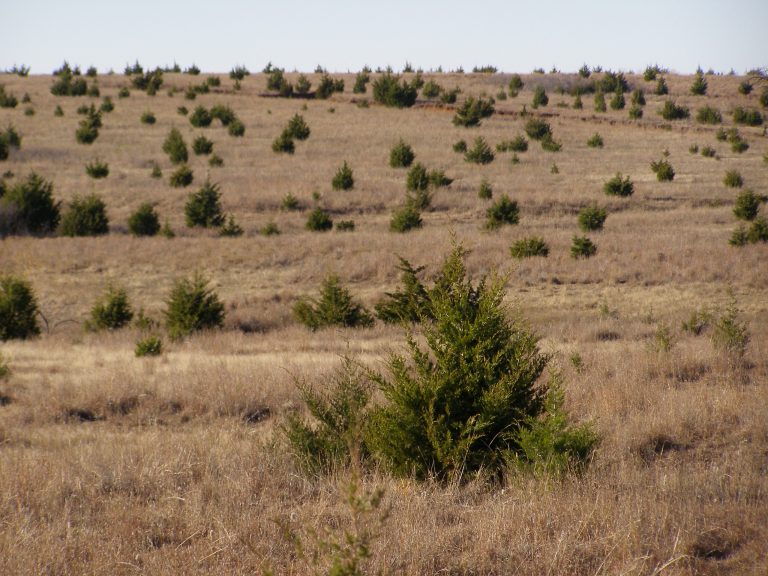
English Ivy
Hedera helix
Origin: Europe, western Asia and northern Africa.
Introduction: Introduced to U.S. by colonial settlers in 1727, and is still widely used as an ornamental. Found throughout southeastern U.S. and Pacific states.
Traits: Evergreen perennial vine with dark leaves. This plant grows in dense carpets, is able to grow in full shade, and can sprout from stem fragments and cut stumps. Also reproduces through seeds, which are widely dispersed by birds. English ivy is stress tolerant and can thrive in many different environmental conditions. Occurs in forest openings, edges and disturbed areas.
Effects: This plant is toxic. This aggressive vine is able to shade out native species, changing the plant community and wildlife community. Forms dense monotypic understory in forests. This plant is not likely invasive in most of Oklahoma due to the hot, dry climate. In eastern Oklahoma, the probability of invasion is higher.
Management: Hand removal is possible, but difficult for established plants. Foliar herbicide application when the plant is actively growing is the best control. The plant is evergreen, so there is limited success of control during winter months.
Alternative Plants: Trumpet creeper (Campsis radicans) and Virginia creeper (Parthenocissus quinquefolia).
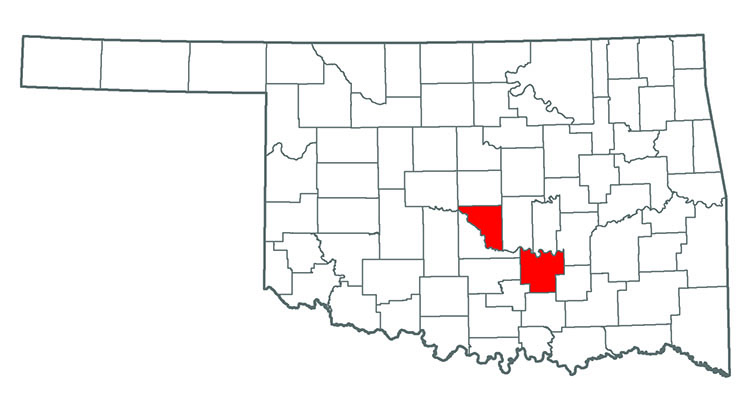
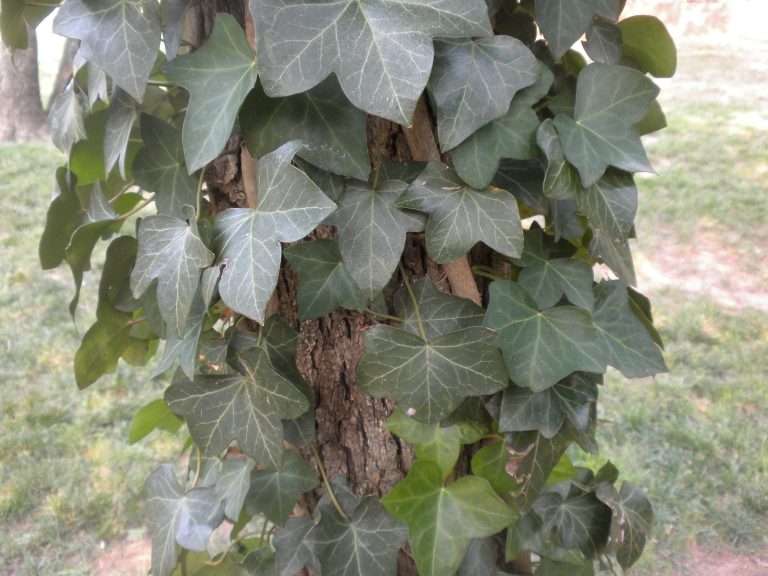
Hydrilla
Hydrilla verticillata
Origin: India and Korea.
Introduction: Introduced to the U.S. in the latter half of the 1900s and was sold for aquarium use.
Traits: Hydrilla stems rise to the surface and fill the entire water column. It can spread by rhizomes, aboveground stolons, stem fragments, tubers and turions. These tubers and turions can produce more than 5,000 new tubers per square meter. They have a high tolerance for ice cover, drying, waterfowl ingestion and regurgitation, and many herbicides. Found in freshwater.
Effects: This plant grows along the water surface in a thick layer, shading out plants that try to grow underneath. It also causes an increase in water temperature, a pH increase and a decrease in oxygen. Hydrilla inhibits water recreation. This plant will replace native plants, rapidly decrease open water, can crowd out waterfowl and cause decreased fish populations, possibly even causing fish kills. Mosquitoes are benefited by the stagnant water conditions created by hydrilla.
Management: Hydrilla can be removed manually if no plant parts are left behind. Grass carp may be an effective biological control. Herbicides approved for aquatic use are effective.
Alternative Plants: Coontail (Ceratophyllum demersum) and waterweed (Elodea canadensis or Elodea nuttallii).
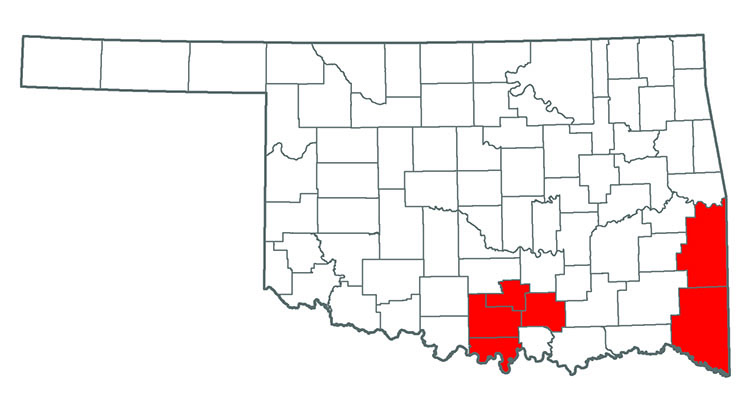
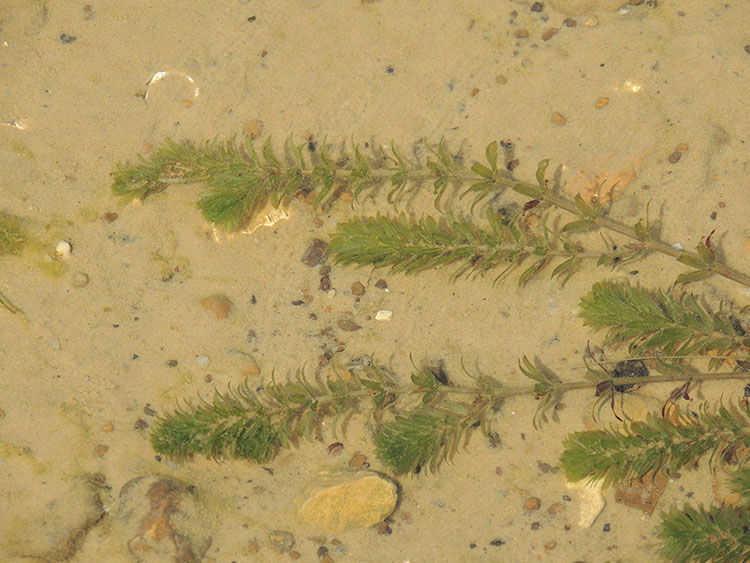
Japanese Honeysuckle
Lonicera japonica
Origin: Japan and Korea.
Introduction: Introduced to New York in 1806 and subsequently planted as an ornamental for erosion control, forage and wildlife cover. Occurs across much of the U.S. with the exception of the northcentral and parts of the northwestern states.
Traits: This is an aggressive perennial vine, which twists and climbs vertical structures, including trees and other plants. Flowers have five petals, ranging from white to pink. The plant is capable of both sexual and vegetative reproduction. Each plant sends out runners with nodes, establishing new plants where it touches the soil. Rhizomes are also effective in dispersal. The seed can be spread by wildlife.
Effects: Japanese honeysuckle forms a dense ground cover that shades out native herbaceous plants. It can also cover small trees and shrubs. While it does provide pollinators and some herbivores with food, it tends to simplify the plant community. Some evidence shows allelopathic abilities because it can inhibit growth and reproduction of other plant species.
Management: Mechanical removal or mowing can suppress the plant for a limited time. Herbicide control is the best option for this plant.
Alternative Plants: Carolina snailseed (Cocculus carolinus) and Virginia creeper (Parthenocissus quinquefolia).
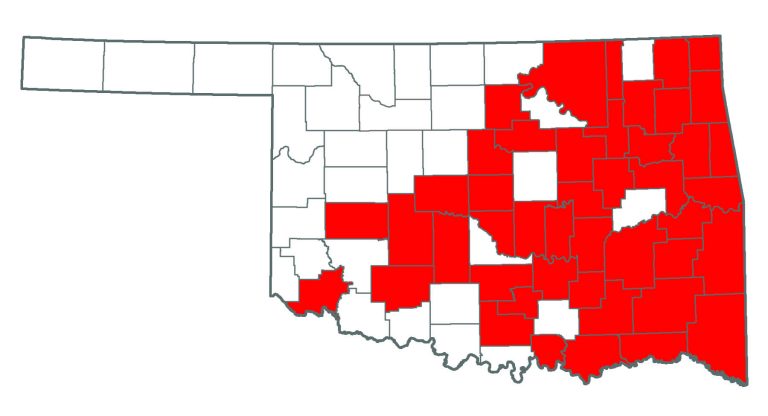
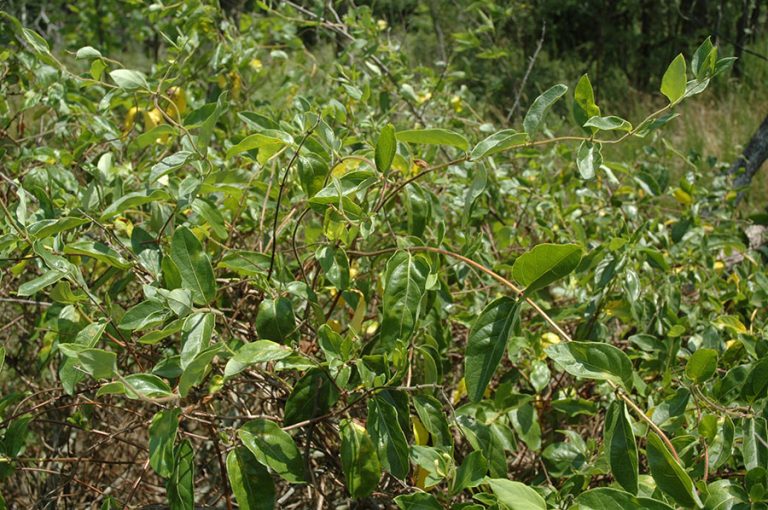
Kudzu
Pueraria montana
Origin: China.
Introduction: Introduced into the U.S. in 1876 at the Centennial Expo in Philadelphia as an ornamental species. Later used to control soil erosion and planted widely. Now on the World’s Worst Top 100 invaders and considered the “Vine that strangled the South.” Found throughout the southeastern and south-central U.S. and Pacific Northwest.
Traits: This legume has large trifoliate leaves and attractive purple blooms. Reproduces through limited seed production in the U.S., but commonly reproduces asexually through the development of adventitious roots at each node in contact with the soil surface. It is a tolerant species of environmental conditions such as moisture and pollution. Rapid growth —can grow up to 18 inches per day.
Effects: Creates dense viney growth that easily covers plants or structures, outcompeting natives. As a legume, soil nitrogen levels are increased following invasion. Alters the vegetation structure of forests by creating the dense growth, effectively de-branching mature trees. Provides good forage, but wildlife generally do not limit its growth.
Management: Grazing by cattle and goats, mowing and burning provide temporary suppression. Successful control requires continued treatment with herbicides.
Alternative Plants: Virginia creeper (Parthenocissus quinquefolia), grape (Vitus spp.), and trumpet creeper (Campsis radicans).
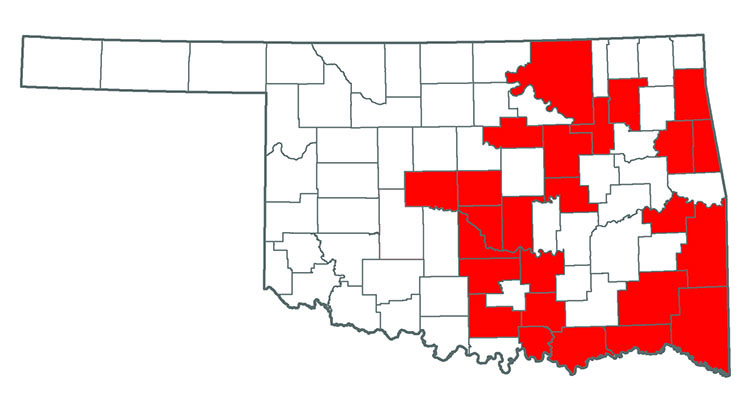
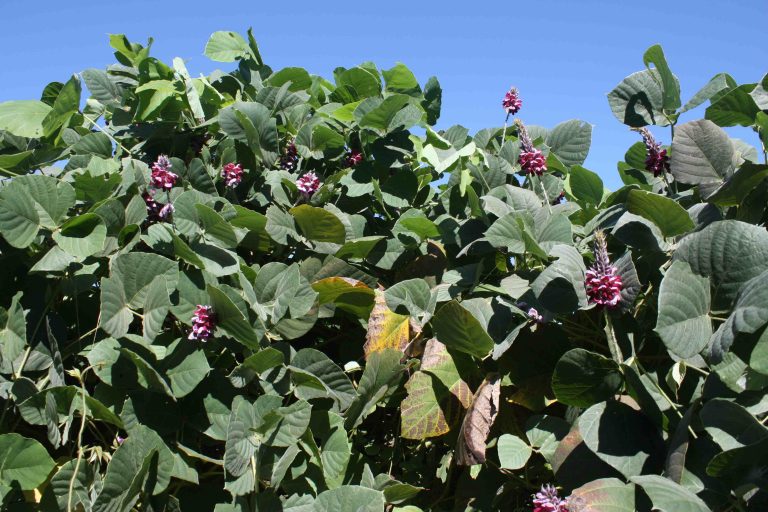
Mimosa or Silktree
Albizia julibrissin
Origin: China.
Introduction: Introduced as an ornamental in 1745. Now found throughout the southern U.S.
Traits: Has large dark, bipinnately compound leaves and showy pink blooms. This medium-sized tree blooms during the summer months and is very attractive to hummingbirds and pollinating insects. Can tolerate a variety of soils and is very tolerant of heat. Requires moderate moisture and mild winters. Seeds can be readily dispersed along streams. Does best in sunlight, but can tolerate shading.
Effects: Competes with native tree seedlings and rapidly invades open disturbed sites. Can form dense stands after disturbance of sites.
Management: Herbicide control is effective for this resprouting tree. Small seedlings may be hand pulled or sprayed with a foliar herbicide. Larger trees should be cut and the stump immediately treated.
Alternative Plants: Sumac (Rhus spp.), western soapberry (Sapindus drummondii), and false indigo-bush (Amorpha fruiticosa).
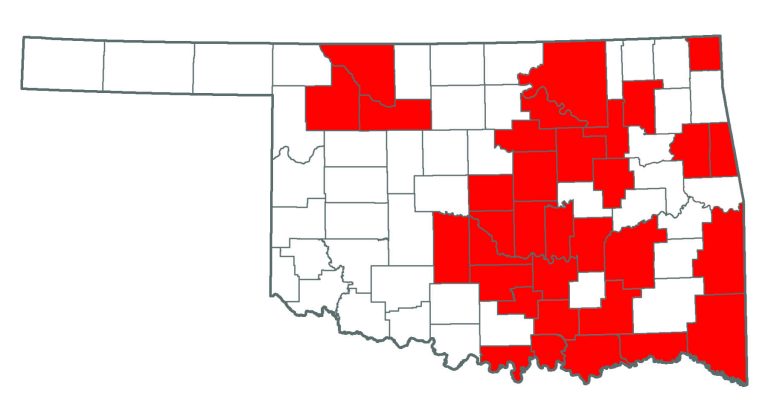
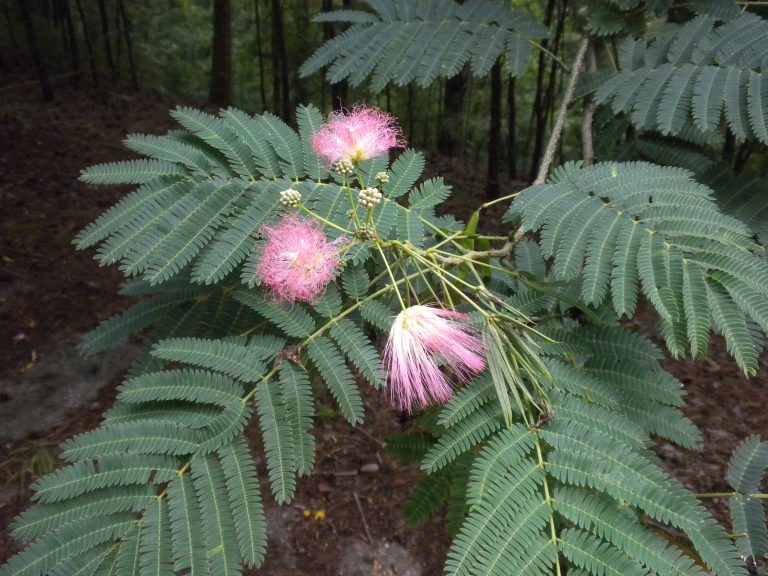
Multiflora Rose
Rosa multiflora
Origin: Japan, Korea and Eastern China.
Introduction: Introduced in 1866 as rootstock for ornamental roses; later promoted for erosion control, living fences (to contain livestock), crash barriers in highway medians and wildlife cover. Occurs throughout eastern and central U.S., as well as the Pacific coastal states.
Population Traits: Tolerant of various soil and light conditions; most commonly found in dense woods, pastures, prairies, open fields and along streambanks and roads. This plant has rapid seed germination and is widely distributed by birds. Additionally, branches will root when touching soil and perform root suckering.
Effects: Multiflora rose forms dense thickets that exclude native species especially where the land has been disturbed.
Management: Chemical and mechanical methods are most widely used, but require frequent repetition. This includes mowing, cutting and application of herbicides. As the plant resprouts, herbicide control is most effective.
Alternative Plants: Sand plum (Prunus angustifolia) and sumacs (Rhus spp.).
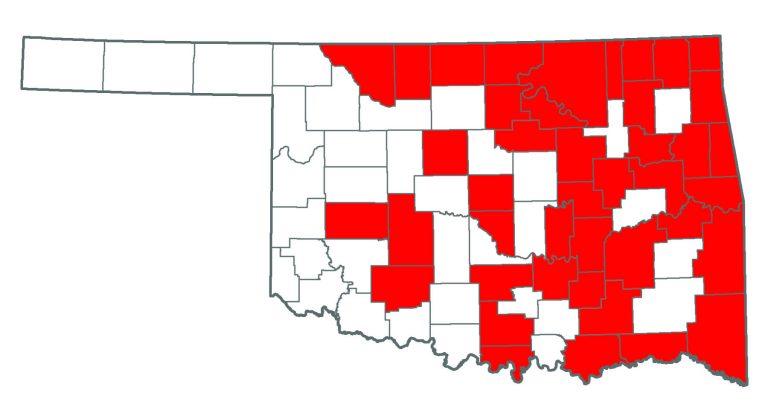
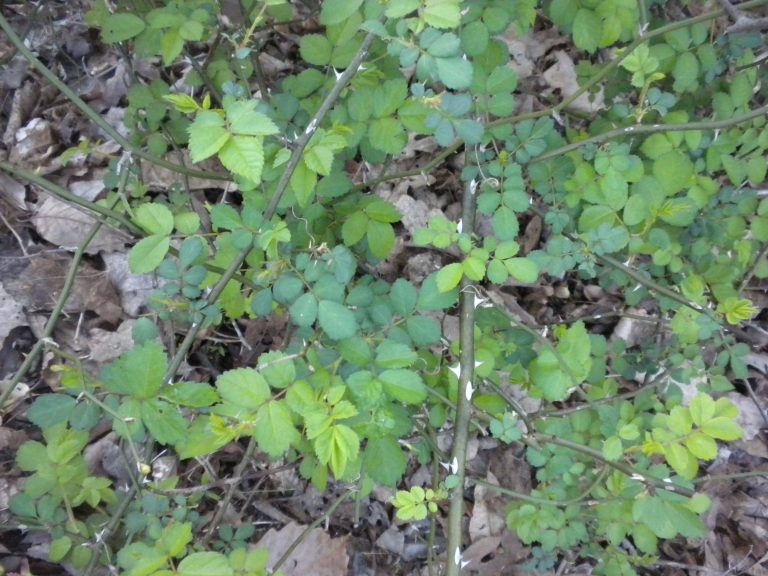
Old World Bluestems
Bothriochloa spp.
Origin: Europe and Asia.
Introduction: Old World Bluestems were introduced to the U.S. in the early 1900s for forage and soil erosion control. Most species (B. ischaemum and B. bladhii) can be found in the central and southern Great Plains.
Traits: Old World Bluestems are yellow-green with smooth leaves, rounded sheaths and flat or folded blades. These grasses are spread by root and seed; the viability of seeds within the seed bank is unknown. Old World Bluestems are not preferred by grazing or foraging animals, so have a competitive advantage over native grasses.
Effects: A particular Old World Bluestem, Yellow Bluestem (Bothriochloa ischaemum) is allelopathic, which in turn, inhibits the growth of native plants. Old World Bluestems produce thicker sod formations than native grasses. This prevents use by quail for nesting and cover. Nutritional value is poor for wildlife, and monocultures are often established.
Management: Herbicides and fire may be used to control the spread of Old World Bluestems. These species are easily spread and very difficult to eradicate. Note: These plants should not be confused with our native bluestem species.
Alternative Plants: Little bluestem (Schizachyrium scoparium), Side-oats grama (Bouteloua curtipendula).
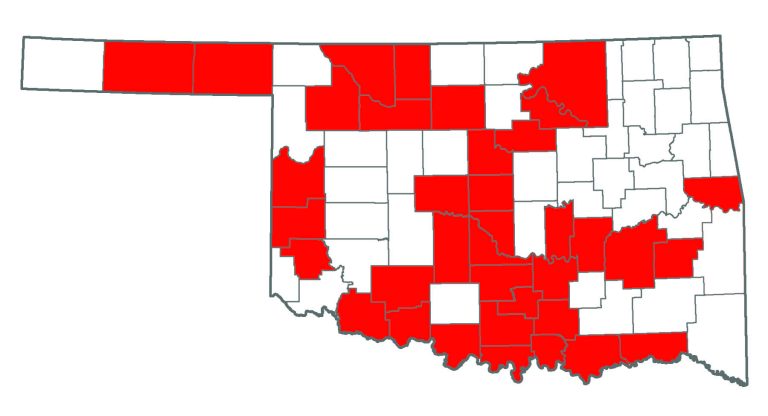

Parrotfeather
Myriophyllum aquaticum
Origin: Amazon River of South America.
Introduction: Introduced in the late 1800s for indoor and outdoor aquatic uses. Used in aquariums.
Traits: Parrotfeather is an aquatic plant with delicate intricate leaves. Grows well in wetlands with high nutrient content. Spreads rapidly by plant fragments. Adapted to shade and is somewhat frost resistant. Can obtain phosphorus and nitrogen through sediment.
Effects: Forms dense mats impeding recreation. Blocks sunlight to water column, changing the plant and animal community. May clog irrigation ducts and canals.
Management: Mechanical methods are not highly effective because parrotfeather can reestablish from any fragments left behind. Herbicide is the best management option, but requires multiple applications.
Alternative Plants: Waterweed (Elodea canadensis or Elodea nuttallii).
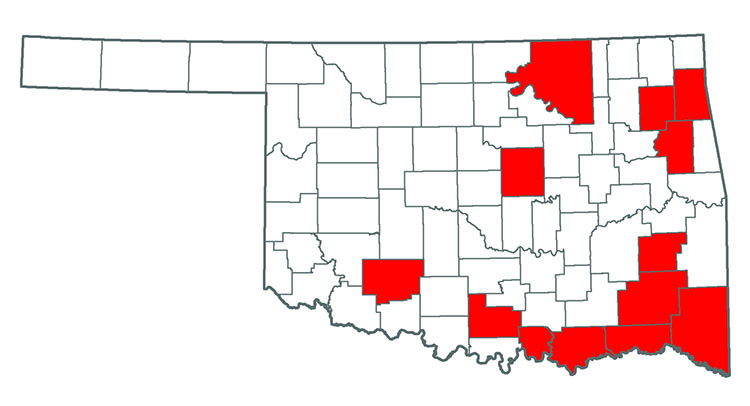
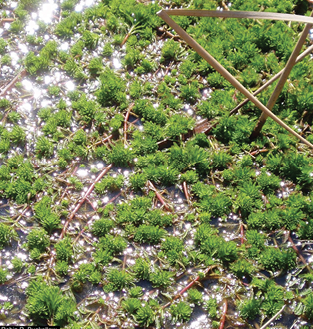
Princess Tree
Paulownia tomentosa
Origin: China.
Introduction: Introduced in the eastern U.S. in the 1840s for ornamental purposes.
Traits: Princess tree has a fast growth rate — up to 15 feet in a single season, becoming a medium sized tree. Large showy purple flowers unmistakable in spring, followed by heart shaped leaves. Princess tree is tolerant of many climates and can resprout from the root. Looks somewhat similar to the native catalpa except when in bloom.
Effects: Highly aggressive plant, outcompeting native species with rapid growth. Can change native plant communities and invade open grasslands. Note: limited information is available on occurrence throughout Oklahoma.
Management: Young seedlings can be hand pulled. Trees, have the ability to resprout after cutting. Cutting or girdling showed to be the most effective method of management, after the application of glyphosate or triclopyr. Foliar or bark herbicides can be used on small trees. Large trees should be cut and the stump immediately treated.
Alternative Plants: Northern catalpa (Catalpa speciosa) and buckeye (Aesculus spp.).

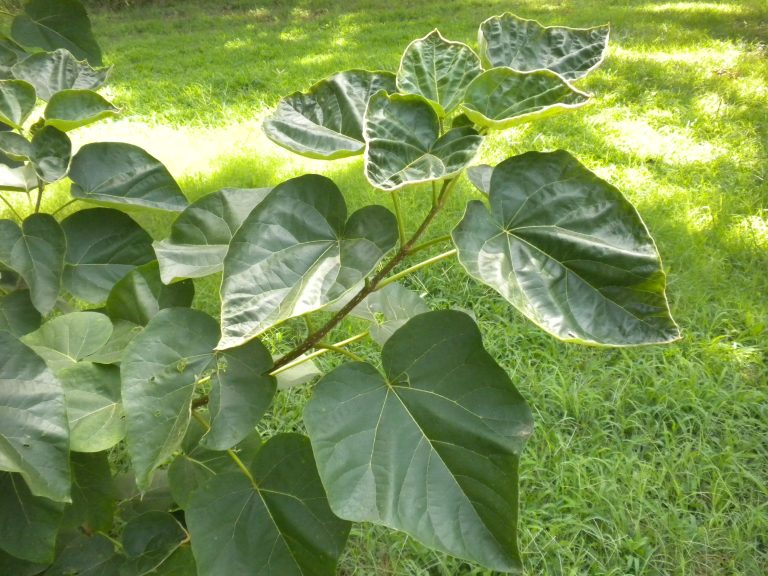
Purple Loosestrife
Lythrum salicaria
Origin: Europe and Asia.
Introduction: Introduced for ornamental and medicinal purposes in the early 1800s. Now found across most of the U.S.
Traits: Showy purple flowers on tall flower stalks are obvious on this herbaceous plant. Produces many easily dispersed seeds. Competition from other plants, herbivores or pathogens is minimal. Will resprout if mowed or burned because it is a perennial. Can be dispersed by water, wind and animals. Flood-tolerant, and grows best in unshaded, moist soils. Grows in dense stands, shading out natives.
Effects: Outcompetes native species by forming dense stands. Can block or disrupt water flow in irrigation canals. Generally thought to decrease biodiversity and can affect nutrient cycling.
Management: Uprooting by hand, ensuring removal of all vegetative parts is possible for small populations. Biological control using four or five species of beetles has been the most effective method so far. Herbicide can be used if beetles are not present.
Alternative Plants: Lizard’s tail (Saururus cernuus), Self-heal (Prunella vulgaris).
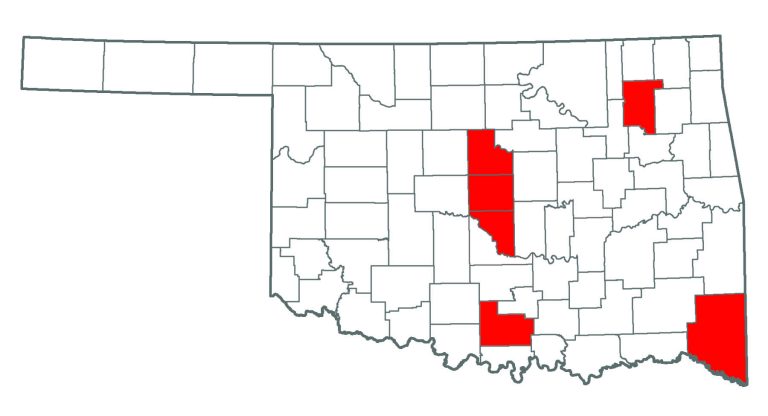
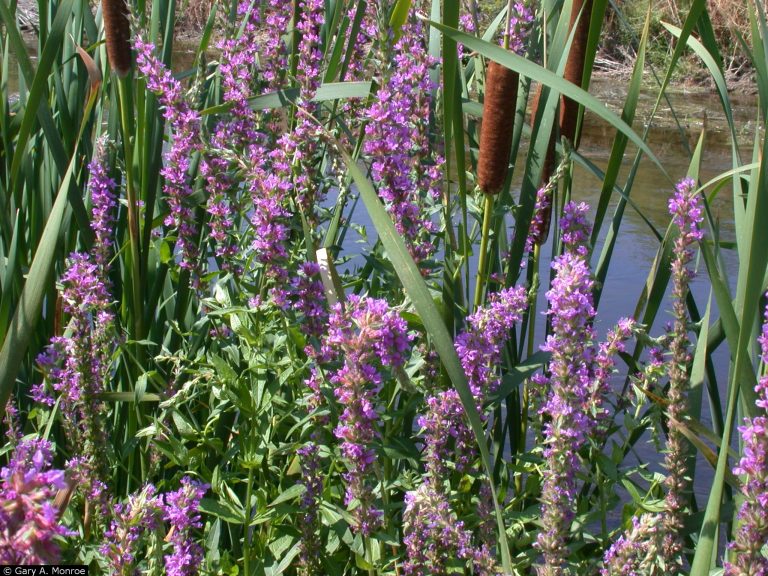
Saltcedar or Tamarisk
Tamarix spp.
Origin: Eurasia.
Introduction: Multiples species introduced into the U.S. as an ornamental in the early 1800s. Escaped into riparian zones along waterways and began to spread. Now found across most of the U.S.
Traits: Several similar species within this genus. Spreading resprouting shrubs or small trees from 5 feet to 20 feet tall. Slender branches with alternate scale-like leaves. Flowers are pale pink to white. Typically found along streams or waterbodies.
Effects: Aggressive colonizer, and is able to survive in a variety of sites. Plants use large amounts of water and secrete salt above- and below ground, which inhibits other plants. Saltcedar is a prolific seed producer, which increases the likelihood of downstream invasion. Some wildlife species use saltcedar for cover.
Management: Saltcedar readily resprouts, therefore mechanical control or fire will only temporally suppress the plant. Herbicides (either foliar, basal bark or cut-stump) are effective. Biological control with several species of introduced beetles is effective. These insects can spread across the U.S.
Alternative Plants: False indigo bush (Amorpha fruiticosa) or button bush (Cephalanthus occidentalis).
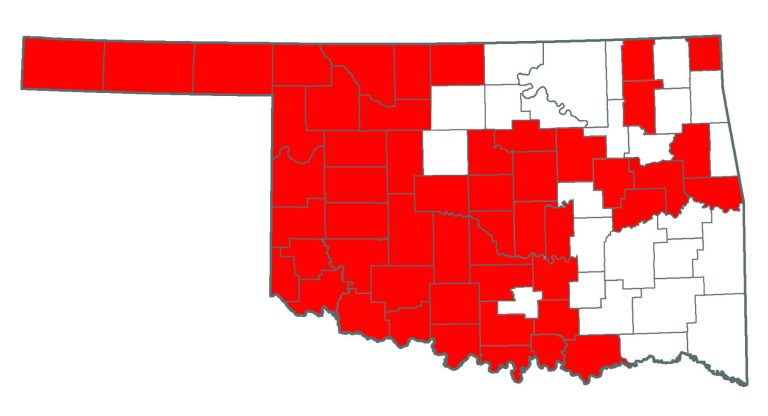
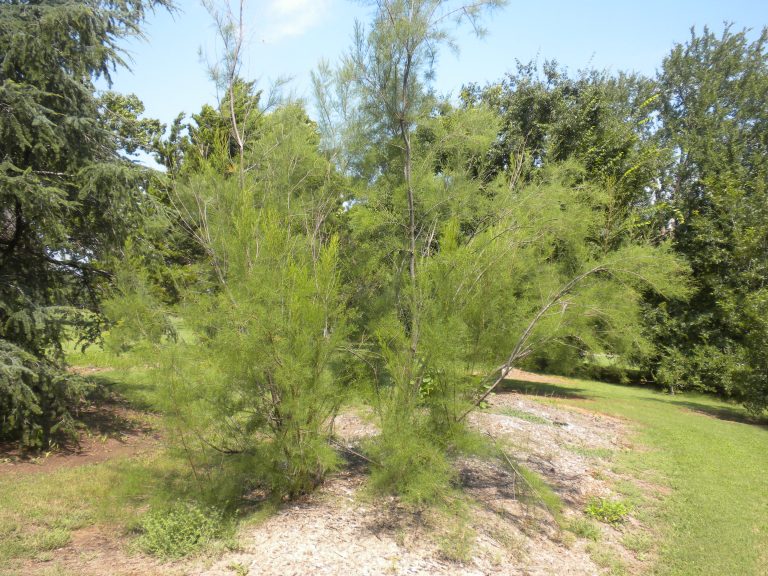
Siberian Elm
Ulmus pumila
Origin: China, Siberia and Turkestan.
Introduction: Brought to U.S. in the 1860s for erosion control, windbreaks and lumber. Also introduced as a replacement for the American elm (Ulmus americana), which was devastated by Dutch elm disease. Still planted intentionally today and found across most of the U.S.
Traits: Medium-sized tree with small-toothed leaves similar to other native elms. This tree is able to colonize riparian zones and upland grassland due to large, wind-dispersed seed. The tree is capable of growing in a wide variety of soils and climates.
Effects: Established in grasslands historically devoid of tree cover. It causes changes in the plant and animal community and replaces native woody plants in riparian areas.
Management: Small seedlings may be hand pulled. Larger trees should be cut and the stump immediately treated.
Alternative Plants: American elm (Ulmus americana) or hackberry/sugarberry (Celtis spp.).
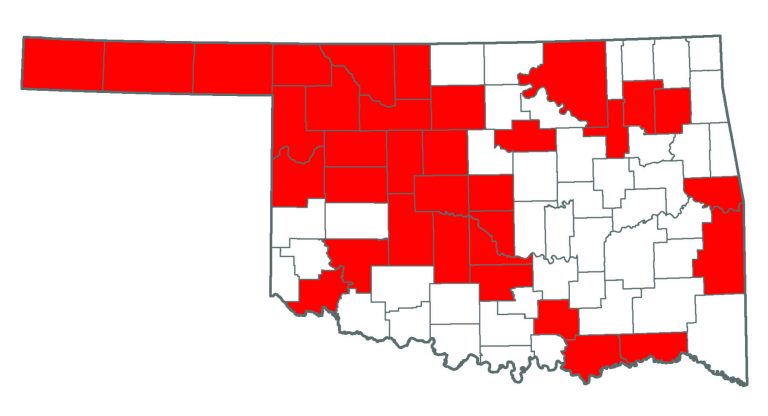
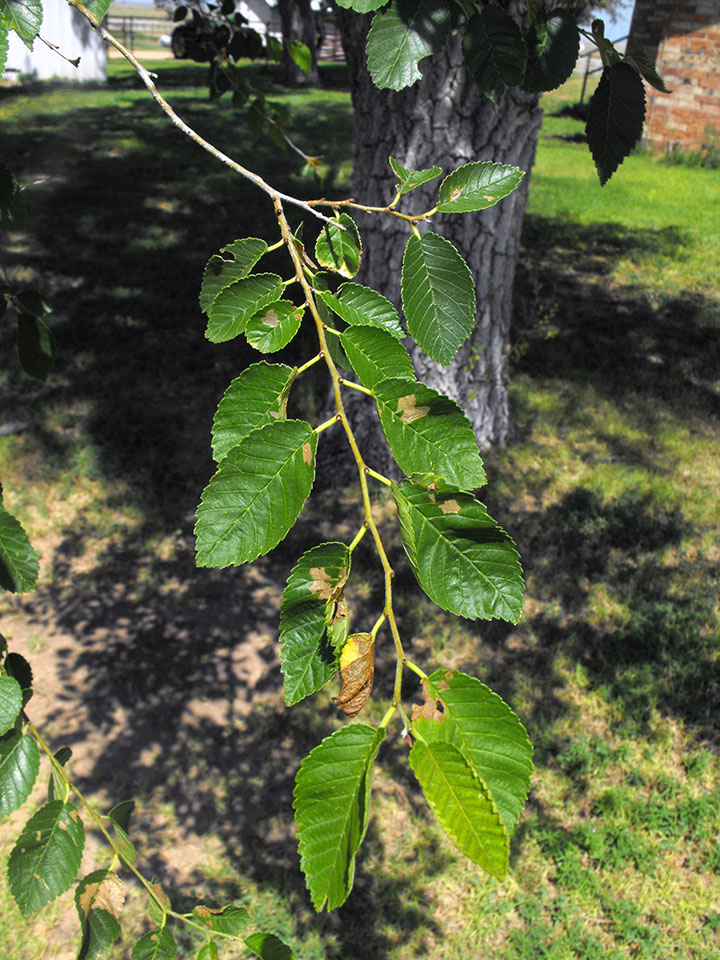
Water Hyacinth
Eichhornia crassipes
Origin: South America.
Introduction: Introduced in Louisiana as an ornamental in 1884. Now found across the southern U.S., as well as the Atlantic and Pacific coasts.
Traits: Water Hyacinth is a floating emergent aquatic plant. Has large showy purple flowers. This plant has a rapid reproductive rate and a complex root system that forms dense, interlocking mats. It produces both sexually and asexually. Seeds are able to germinate within six months. Growth is promoted in sites with low nutrients and temperatures, and is not limited by shallow water depth.
Effects: Dense interlocking mats help this plant change the aquatic plant and animal communities. Along with devastating aquatic biodiversity, Water Hyacinth causes increased water loss rates through transpiration. It can also cause siltation of water, as well as block irrigation channels and hydroelectric turbine intakes.
Management: Pulling is only effective on small infestations. Herbicides can be effective, but must be continued with follow-up applications. There are several insect species and pathogens that can be used as biological controls of water hyacinth.
Alternative Plants: American lotus (Nelumbo lutea).
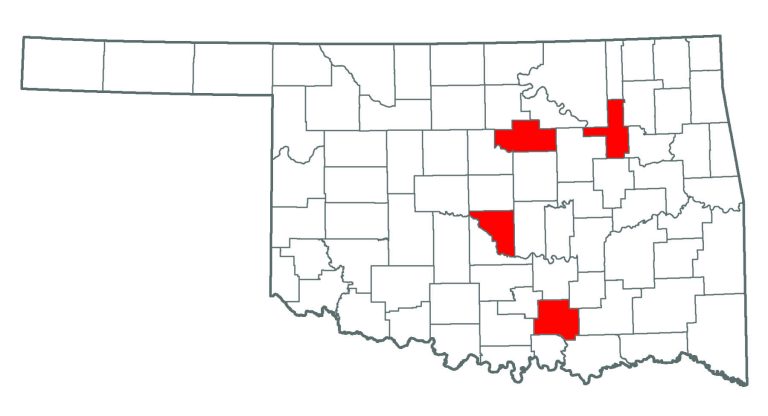
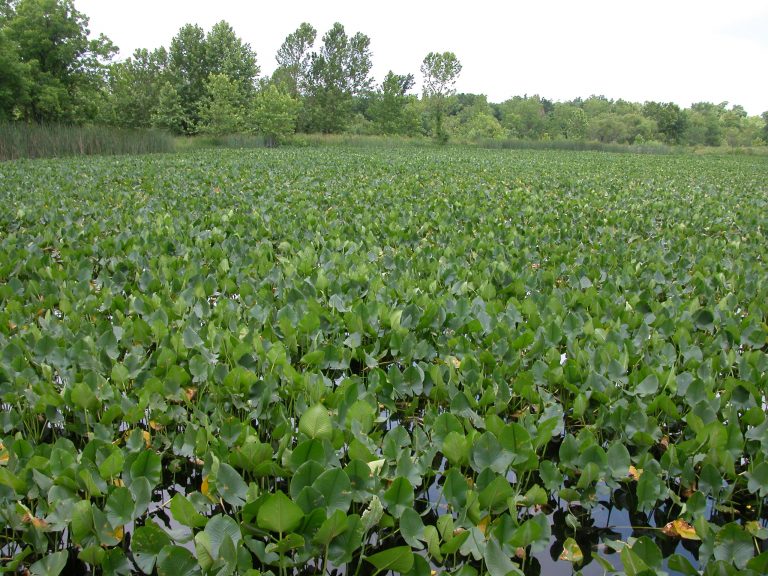
Watermilfoil
Myriophyllum spicatum
Origin: Europe, Asia and northern Africa.
Introduction: Introduced to Northern America in the 1940s by boat traffic.
Traits: Watermilfoil can reproduce by stem fragments or leaves and form new colonies. It can grow up to two inches per day and in many different environmental conditions including water bodies and substrates.
Effects: Watermilfoil beds are dense, and therefore poor fish spawning areas. Thick mats may lead to stunted fish populations. It also can interfere with water recreation.
Management: Mechanical removal methods are possible, but only effective if no plant parts are left behind. It is most effective if mechanical removal is followed by herbicide treatment. Several methods of biological control have also been shown to be effective in controlling watermilfoil.
Alternative Plants: Coontail (Ceratophyllum demersum) and waterweed (Elodea canadensis or Elodea nuttallii).

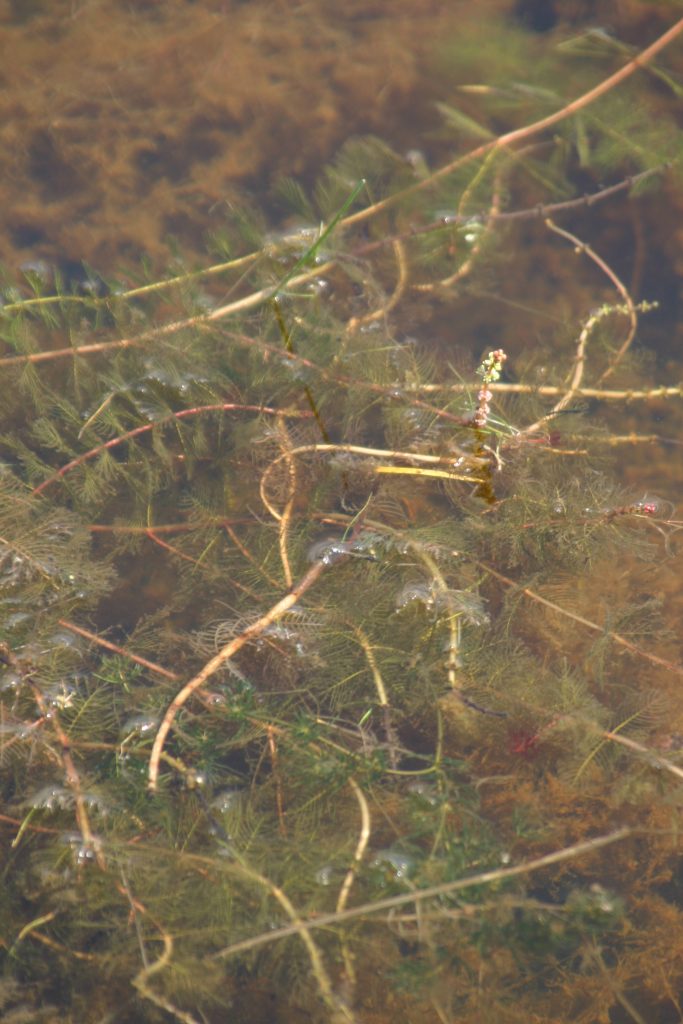
Weeping Lovegrass
Eragrostis curvala
Origin: South Africa.
Introduction: Introduced to the U.S. in 1927 for erosion control, forage and as an ornamental. Still widely planted. Occurs throughout the southern U.S. and Atlantic and Pacific coasts.
Traits: This warm-season perennial bunchgrass grows rapidly and up to 60 inches tall. When introduced, it spread rapidly by developing dense tussocks. This alters once gravely, sparsely vegetated areas to a monoculture of long-lasting grasslands. Self seeds readily, is drought tolerant and has rapid early growth.
Effects: Tends to form monotypic stands of little forage value. Creates large amounts of flammable fuel.
Management: Mechanical treatments and burning only temporarily reduce the biomass. Repeated and persistent herbicide control is required to remove this tough plant.
Alternative Plants: Eastern gamagrass (Tripsacum dactyloides), big bluestem (Andropogon gerardii), and giant sandreed (Calamovilfa gigantea).
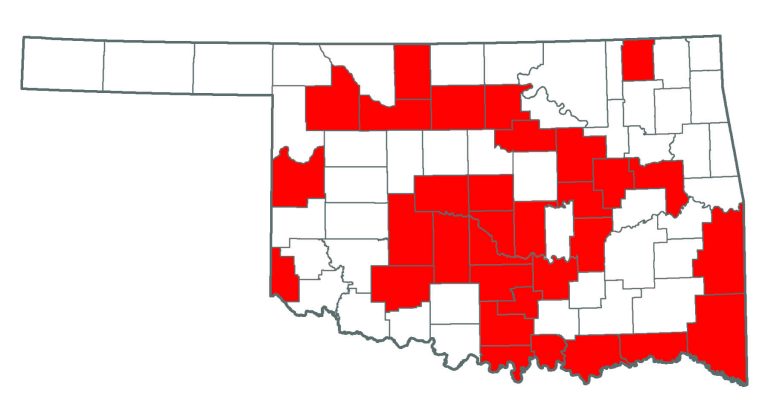
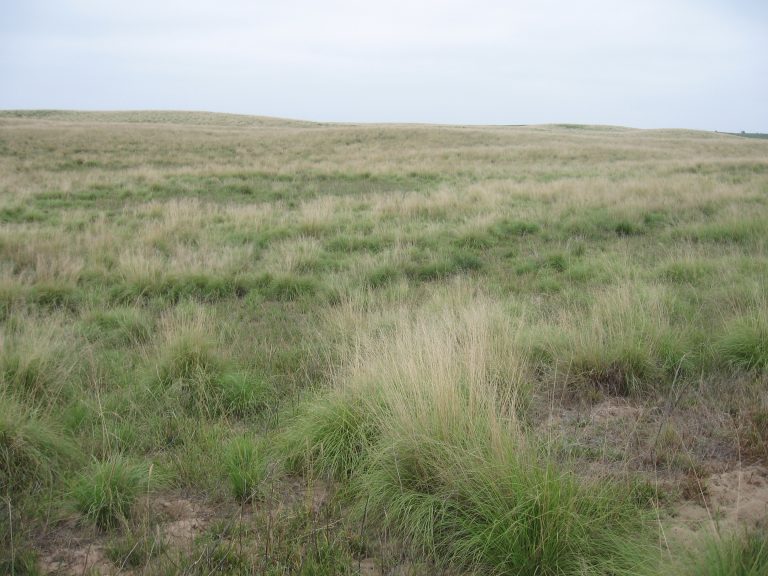
Yellow Iris
Iris pseudacorus
Origin: Europe, Western Asia and Africa.
Introduction: This plant was brought to the U.S. in the early 1900s as an ornamental plant. Now found across much of the U.S. and is still commonly sold and planted.
Traits: Large iris with showy yellow flowers. Grows in fresh or brackish water and can occupy areas with low oxygen content. Can tolerate high soil acidity and requires high levels of nitrogen for optimum growth. All parts of the plant are poisonous.
Effects: Large plants that can form dense colonies in wet areas, displacing native species.
Management: Can be effectively controlled by aquatic-approved herbicides. Use caution when pulling out this plant because it can cause skin irritation. Seed pods can be removed to help control population expansion. Small populations can be eliminated by digging out the rhizomes.
Alternative Plants: Lizard’s tail (Saururus cernuus), Self-heal (Prunella vulgaris).
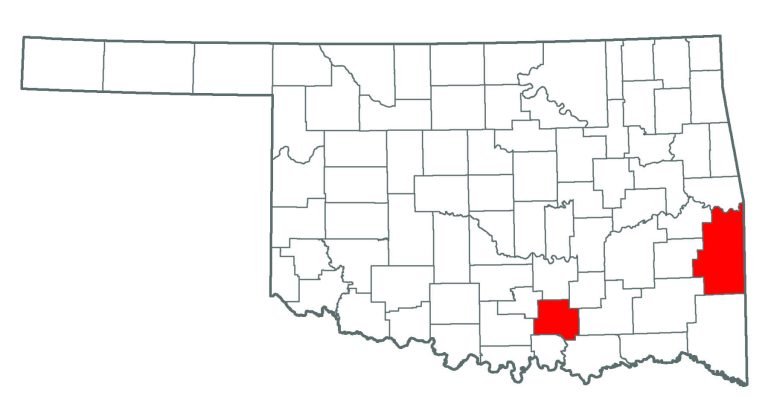
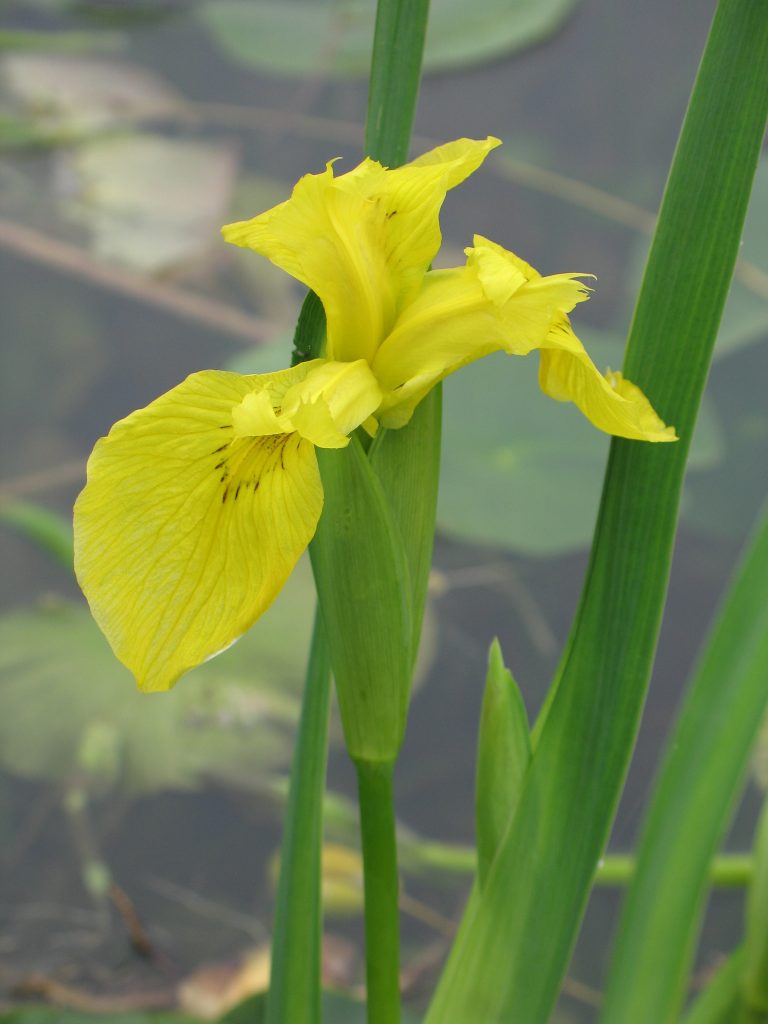
Dwayne Elmore
Extension Specialist,Wildlife Ecology and Management
Karen Hickman
Professor, Rangeland Ecology and Management
Kimberly Holmes
Former Assistant Extension Specialist, Consumer Horticulture
